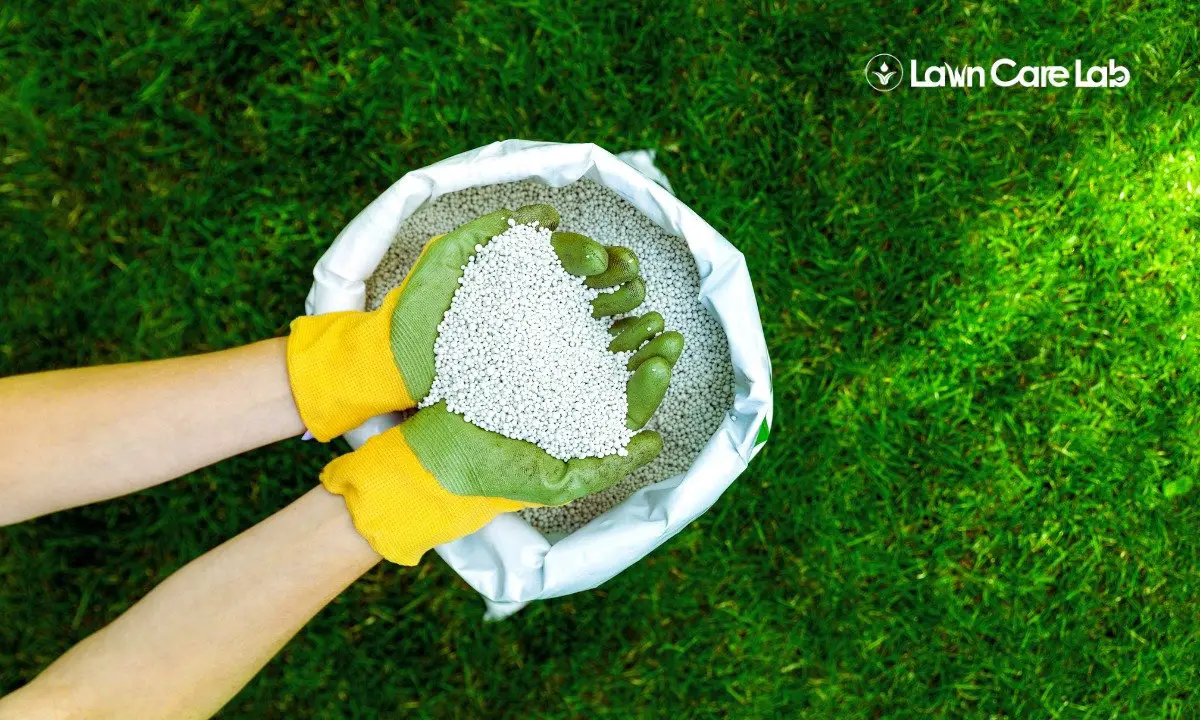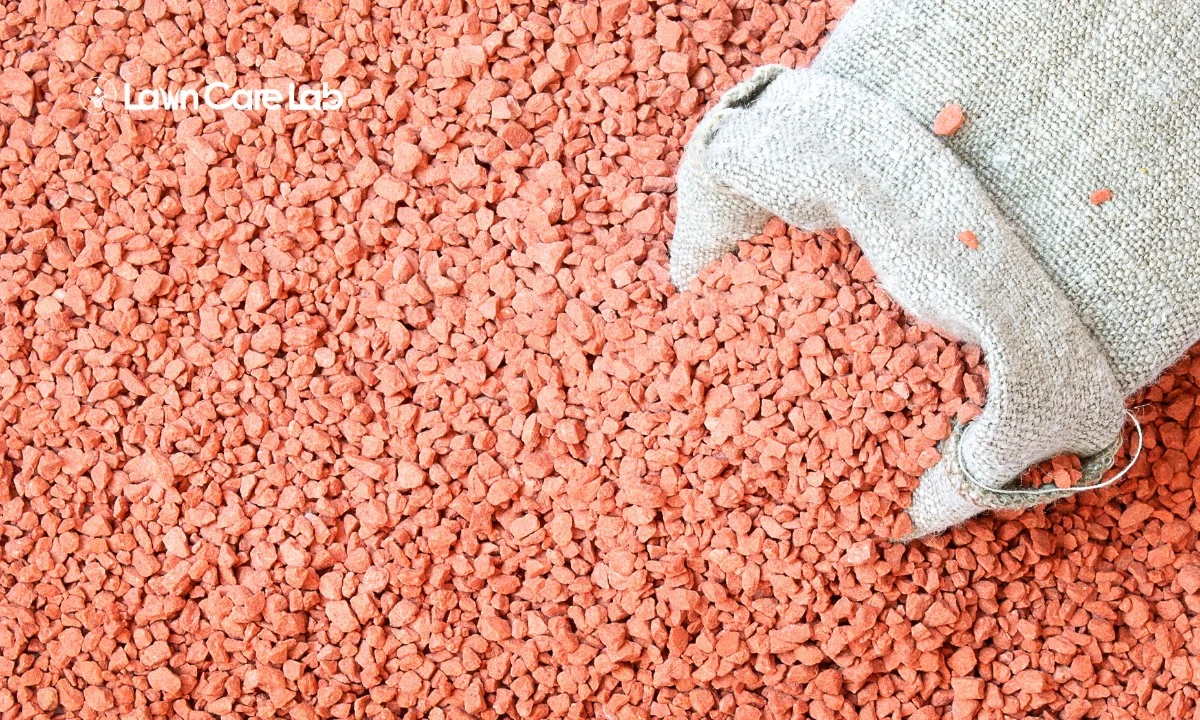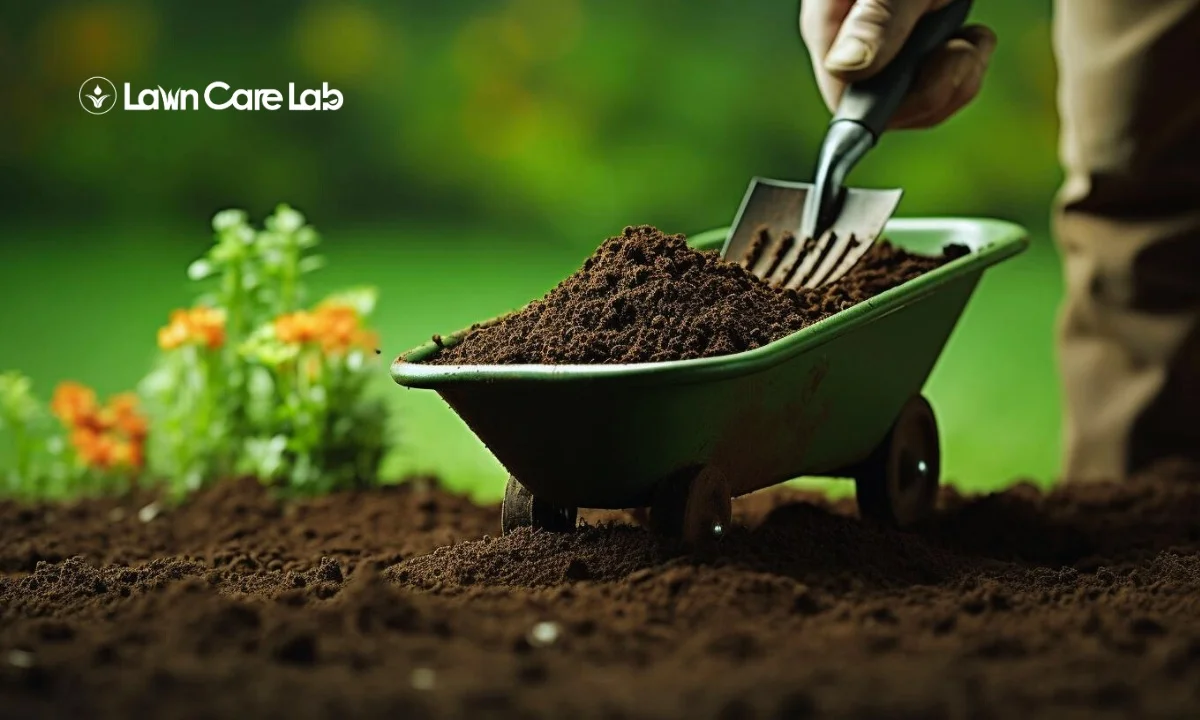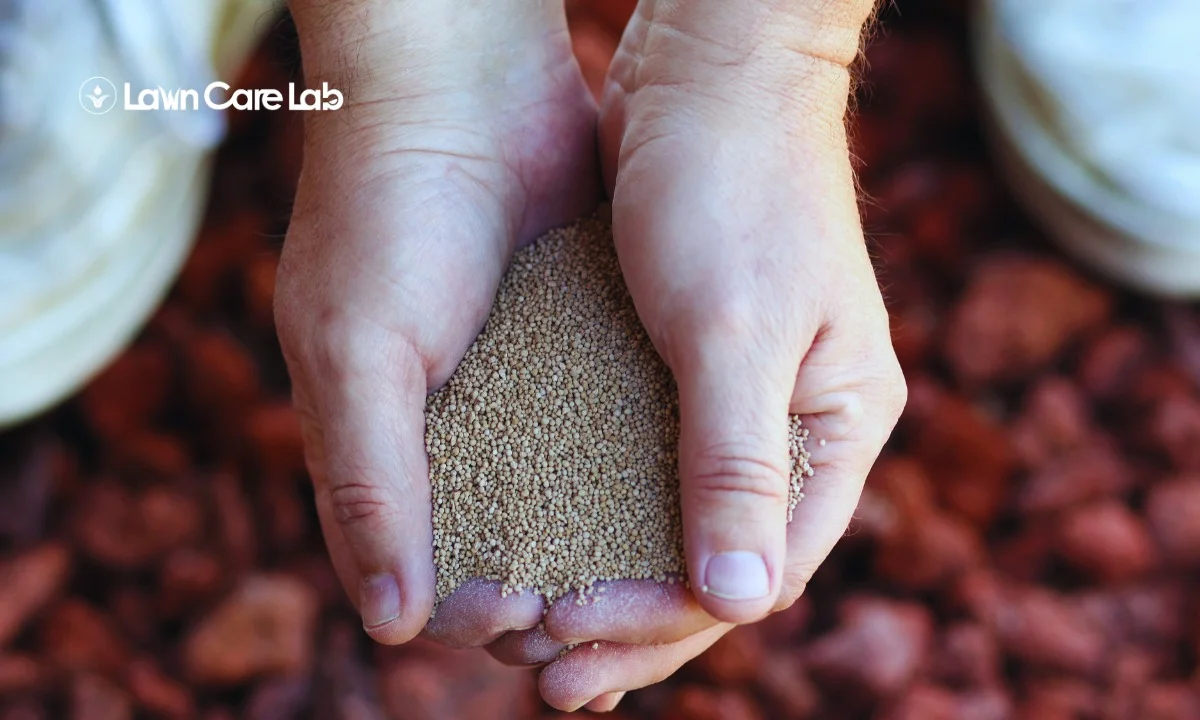Taking care of your lawn in winter can be tough. The cold weather can be hard on your grass. But there’s a solution – winter fertilizer.
It is important to know when and how to use it and which one to pick.
Let’s work together and ensure your lawn returns healthier than before!
Table of Contents
Understanding Winter Fertilizer for Lawns
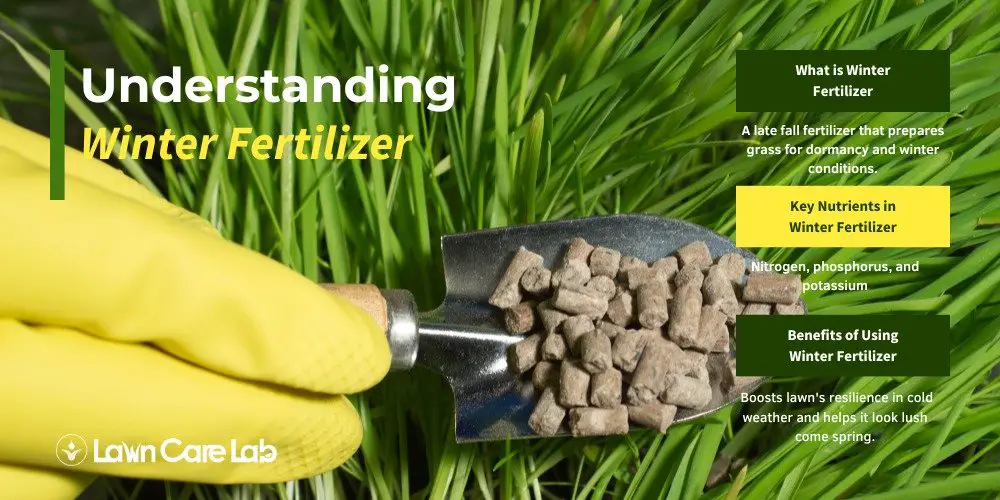
Did you know that preparing for winter is more than finding warm socks?
Winter fertilizer is like food for your lawn. It helps your grass stay strong during the cold months. Give it a try; by spring, you may see thicker grass in this winter.
What is Winter Fertilizer
Winter fertilizer is a late fall or early winter application that prepares grass for cooler weather and dormancy.
It contains lower nitrogen but higher phosphorus and potassium to strengthen roots, improve cold tolerance, and limit top growth prone to winter damage.
It helps strengthen roots and harden lawns before winter with essential nutrients.
Key Nutrients in Winter Fertilizer
The main nutrients in winter fertilizer for your yard are nitrogen, phosphorus, and potassium. They are very important for your lawn’s health during cold months.
Here’s a simple explanation:
- Nitrogen: Helps your grass grow quickly and stay green.
- Phosphorus: Strengthens the root systems of your grass.
- Potassium: Increases your lawn’s ability to handle frosty mornings.
Choosing the best winter fertilizer for lawns isn’t just about the brand. It’s about knowing these key nutrients and using them properly.
Benefits of Using Winter Fertilizer
Winter fertilizer boosts your lawn’s resilience in cold weather and helps it look lush come spring.
Here are some key benefits in a simple table:
| Benefits | Outcome |
|---|---|
| Boosts root growth | Healthier Lawn |
| Restores nutrients | Rich Soil |
| Strengthens plant parts | Tough Grass |
| Increases energy storage | Fast Greening |
| Enhances cold resistance | Less Winter Damage |
When to Apply Winter Fertilizer
Get ready to understand the best timing for lawn care.
Applying fertilizer in early to mid-fall might seem smart, and in late fall or early winter can also be good. Just remember not to fertilize in the middle of winter to avoid an unhealthy lawn.
Early to Mid-Fall Application
Fall is the best time for fertilizer because of nutrient absorption and root growth.
Here’s the scoop!
- Using fertilizer in early fall benefits your lawn’s roots much like a calm day helps busy individuals relax.
- Consider it like choosing your outfit for fall – not too hot, not too cold, but just right!
- The ideal fertilizer for winter lawn care can handle cooler temperatures.
Remember, the earlier in the fall, the healthier your roots and the greener your lawn will be in spring.
Late Fall or Early Winter Application
Fertilizing in late fall or early winter can benefit your lawn, especially if you have cool-season northern grass or live in a warmer region. Because-
- It strengthens roots before dormancy for a healthier spring green-up.
- Improves disease resistance and cold temperature tolerance over winter.
- It provides slow, steady nutrient release rather than leaching.
- It avoids fueling excessive top growth that winter will damage.
Late winter lawn fertilizer helps the roots absorb nutrients before they rest.
Avoid Mid-Winter Fertilizing
Don’t feed your yard in winter, especially in January. Plants’ roots are dormant and can’t absorb nutrients well due to frozen ground.
Here’s why:
- Winter grass food can’t get through frozen soil.
- Roots are inactive in winter and won’t take in nutrients.
- Late feeding can trigger growth that will freeze quickly.
- You’re basically wasting money and effort.
Selecting the Best Winter Fertilizer
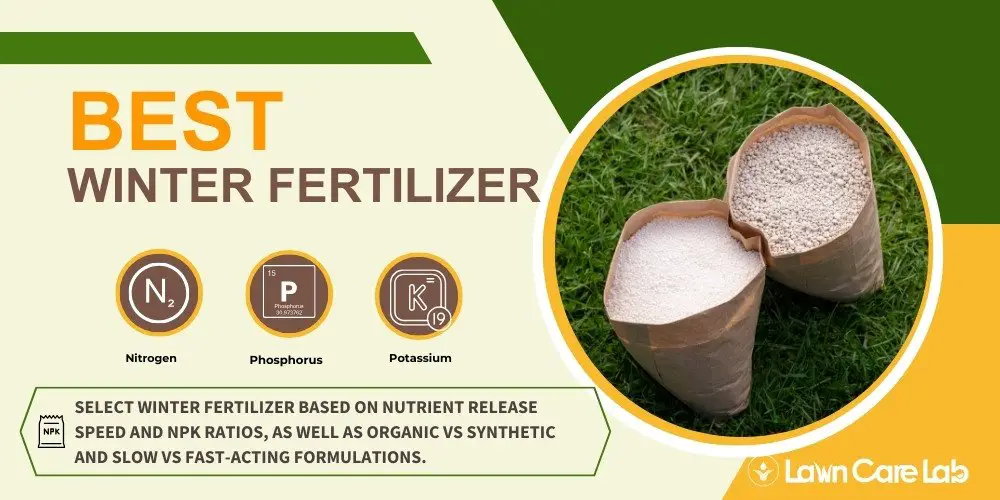
Consider nutrient release speed and N-P-K ratios when choosing winter fertilizer. Choose between organic and synthetic options, and choose slow-release or fast-acting fertilizer.
Nitrogen-Phosphorus-Potassium Ratio
When choosing winter fertilizer, prioritize high phosphorus and potassium with a low nitrogen ratio (e.g., 1-3-2 or 2-4-4) to strengthen roots and harden grass before dormancy.
The recommended maximum nitrogen rate is 0.5-1 lb per 1000 sq ft. Slow-release nitrogen is preferable to minimize leaching.
Higher phosphorus (2-4 lb/1000 sq ft) fuels root growth and respiration during cooler months when top growth slows.
Higher potassium (2-4 lb/1000 sq ft) strengthens grass against disease, wear, and cold weather stress during dormancy.
Slow-Release vs. Fast-Release Formulas
Winter fertilizers should have both slow and fast-release forms; knowing about this is crucial for green areas. It’s like a race between a tortoise and a hare for nutrients.
Slow-release fertilizers provide steady nitrogen levels for 8-12 weeks, promoting long-term plant health.
Fast-release fertilizers give quick results for a greener lawn but may not last through winter and can cause nutrients to disappear.
Let’s talk about organic vs. synthetic fertilizers.
Organic vs. Synthetic Fertilizers
Synthetics are like an energy drink, while organics are like a healthy smoothie.
Here are the details:
- Organic fertilizers take time to work, so use them 1-2 months before winter.
- Synthetic fertilizers work well for feeding your lawn in fall and early winter.
- Organic options like compost or manure nourish your grass and improve the soil.
- Synthetic fertilizers give precise nutrient levels – there’s no guessing needed!
Application Tips for Winter Fertilizer
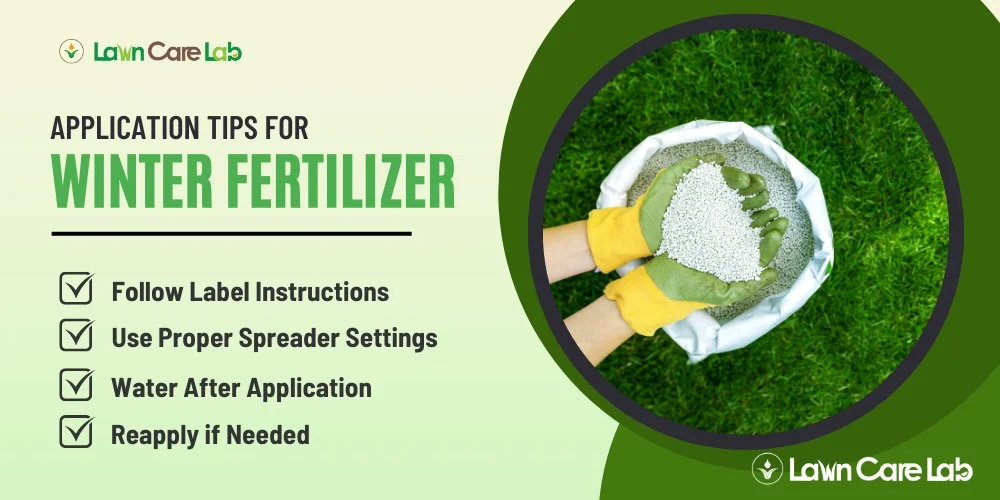
You have your winter fertilizer and are prepared to care for your lawn. But hold on, don’t rush with the spreader!
It’s important to read and follow the instructions on the label carefully.
Adjust your spreader settings correctly.
Water the area well after application.
Reapply the fertilizer if needed.
Follow Label Instructions
Follow fertilizer instructions for proper lawn nutrition. Too much fertilizer can harm grass, like too much salt in cooking.
Keep these rules in mind:
- Measurements are important: granular fertilizers are measured in pounds per square foot, liquids in gallons per acre.
- Only use the amount of fertilizer that is recommended for your lawn size.
- Be careful not to use too much nitrogen.
- Apply winter fertilizer at the right time, not too early or too late.
Use Proper Spreader Settings
Spread the fertilizer evenly for maximum effectiveness. It’s like seasoning a meal – distribute it evenly.
Start with a low setting on your spreader and walk regularly. See it as a chance for daily exercise!
If you see areas of grass that are not fertilized, increase the setting.
This way, every grass blade gets the nutrients it needs before winter.
Water After Application
After applying the product, water your yard. The water combines everything and delivers the nutrients to the grass’s roots.
Remember:
- Avoid overwatering your grass. Too much water can wash away the valuable fertilizer.
- Use a light to medium amount of water. You’re not trying to flood your yard.
- If you’re using granular fertilizers, make sure they fully dissolve. You don’t want any hard pieces left behind!
- For liquid spray fertilizers, ensure they soak deep enough to reach the roots.
Show your lawn some care, but don’t overdo it. Your lawn will appreciate it!
Reapply if Needed
If your lawn looks unhealthy, consider using fertilizer again.
Be patient and wait for spring to start gardening. Let nature do its work. Apply cool-season grass once in winter and twice in hot places. No need for perfection every day.
Next, let’s discuss alternatives to winter fertilization because variety is important, right?
Alternatives to Winter Fertilizer
We should discuss fall lawn fertilization as an alternative, letting it rest during the cold months, compost topdressing, and why waiting for spring may be wise.
Fall Lawn Fertilization
Fertilizing your lawn in the fall is crucial to prepare it for winter. Choose the best fertilizer for optimal results, and here’s what it needs:
- A balanced fertilizer to feed the grass.
- Feedings in fall and late fall/early winter for a good meal.
- Good cold resistance because it’s going to be chilly!
- Preparation for spring regrowth because everyone loves a fresh start!
There you have it! You’ve now lessened the chance of your grass dying in winter.
Let’s talk about letting your lawn rest for winter as another way to prepare.
Let Lawn Go Dormant
Allowing grass to go dormant in winter is crucial for its survival.
Letting your grass go dormant during winter is important for its health. Excessive fertilization and watering can harm it. Dormancy helps prepare and rejuvenate your lawn for the cooler months.
Compost Topdressing
Feed your lawn with compost in the fall. It’s like a warm blanket, providing slow-release food for its winter sleep. Plus, it’s more eco-friendly than harsh winterizers.
Here are some helpful tips for using compost:
- Amount: Use about an inch of compost for the best results.
- When: Put it on your lawn before it sleeps for winter.
- Nutrients: Compost releases nutrients throughout the winter.
- Soil improvement: It not only feeds your lawn but also makes the soil better.
Conclusion
So, there it is! Your yard needs winter fertilizer, just like a bear needs food before hibernation.
Don’t forget to apply it at the right time, choose the best one, and use it carefully.
If you don’t like the usual methods, try different ones.
Remember these tips and make your lawn the greenest in the neighborhood, even greener than Shrek in spring!
Frequently Asked Questions
What Types of Grass Benefit Most From Winter Fertilization?
You might be curious about what grass types like winter fertilization the most. Cool-season grasses such as Kentucky bluegrass, ryegrass, and fescues benefit the most. They use this food to give you a rich and green lawn in the spring!
Can Winter Fertilizer Harm My Lawn if Used Incorrectly?
If you don’t use winter fertilizer correctly, it can damage your lawn. Using too much can harm the grass, and using too little won’t be effective. So, use it carefully to keep your yard green in winter.
Is It Possible to Use Winter Fertilizer in Other Seasons?
Yes, you can use winter fertilizer in other seasons. But it’s like wearing a heavy coat on a hot day – it doesn’t really fit. Your grass may not like it as much as you think!
Are There Specific Brands of Winter Fertilizer That Professionals Recommend?
Yes! Experts usually suggest using Scotts Turf Builder WinterGuard. In fact, 92% of people who used it noticed their lawns were greener by spring. Your lawn will look lush and green!
How Does Winter Fertilizer Affect the Local Ecosystem or Wildlife?
Winter fertilizer can be good and bad for your local ecosystem. It helps your grass grow but can also hurt local animals and water if not used properly. So, use it wisely!
- Special Considerations and Techniques for Maintaining Sloped Lawns - July 15, 2024
- How Green Spaces Influence Community Interactions - July 8, 2024
- Lawn Fungal Diseases: Identification and Treatment - July 3, 2024

